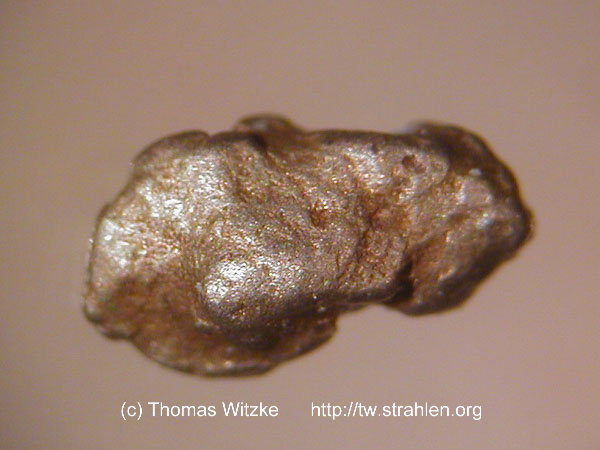
Palladium (Pd) has an atomic number of 46 and an atomic mass of 106.42. It's melting point is 1560 °C and it's boiling point is 2927 °C. Palladium, along with platinum, osmium, ruthenium, and rhodium form a group of elements referred to as the platinum group metals (PGM). Palladium is a lustrous silver-white metal. At ordinary temperatures it is strongly resistant to corrosion in air and to the action of acids. It forms many compounds and several complex salts. Palladium has a great ability to absorb hydrogen (up to 900 times its own volume).
When it is finely divided, palladium forms a good catalyst and is used to speed up hydrogenation and dehydrogenation reactions. Because of its corrosion resistance, a major use of palladium is in alloys used in low voltage electrical contacts. Palladium is used extensively in jewelry-making in certain alloys called “white gold.” It may be alloyed with platinum or substituted for it. It is used in watch bearings, springs, and balance wheels and also for mirrors in scientific instruments.
Palladium is now the main ingredient used in catalytic converters because this is even more efficient at removing unburnt and partially burnt hydrocarbons from the fuel than platinum.
Palladium is nowadays more and more used in electrical appliances such as wide screen televisions, computers and mobile phones, in the form of tiny multi-layer ceramic capacitors, of which more than 400 billion are made each year.
For use in dentistry it is alloyed with silver, gold, and copper. Palladium salts are used in electroplating.
Most palladium is extracted as a by-product form nickel refining. It is found as the free metal associated with platinum and other platinum group metals in Australia, Brazil, Russia, Ethiopia, and North and South America, as well as with nickel and copper deposits (from which it is recovered commercially) in Canada and South Africa.
Palladium is regarded as of low toxicity, being poorly adsorbed by the body when ingested.
Palladium compounds are encountered relatively rarely by most people. All palladium compounds should be regarded as highly toxic and as carcinogenic.
Palladium has little environmental impact. It is present at low levels in some soils, and the leaves of trees have been found to contain 0.4 ppm. Some plants, such as the water hyacinth, are killed by low levels of palladium salts but most plants tolerate it.
Palladium is nowadays more and more used in electrical appliances such as wide screen televisions, computers and mobile phones, in the form of tiny multi-layer ceramic capacitors, of which more than 400 billion are made each year.
For use in dentistry it is alloyed with silver, gold, and copper. Palladium salts are used in electroplating.
Most palladium is extracted as a by-product form nickel refining. It is found as the free metal associated with platinum and other platinum group metals in Australia, Brazil, Russia, Ethiopia, and North and South America, as well as with nickel and copper deposits (from which it is recovered commercially) in Canada and South Africa.
Palladium is regarded as of low toxicity, being poorly adsorbed by the body when ingested.
Palladium compounds are encountered relatively rarely by most people. All palladium compounds should be regarded as highly toxic and as carcinogenic.
Palladium has little environmental impact. It is present at low levels in some soils, and the leaves of trees have been found to contain 0.4 ppm. Some plants, such as the water hyacinth, are killed by low levels of palladium salts but most plants tolerate it.
2 comments:
sarah, great idea to post a pic of your metal! i might do that, too.
It was another joy to see your post. It is such an important topic and ignored by so many, even professionals. I thank you to help making people more aware of possible issues. Great stuff as usual...
where to find platinum
Post a Comment